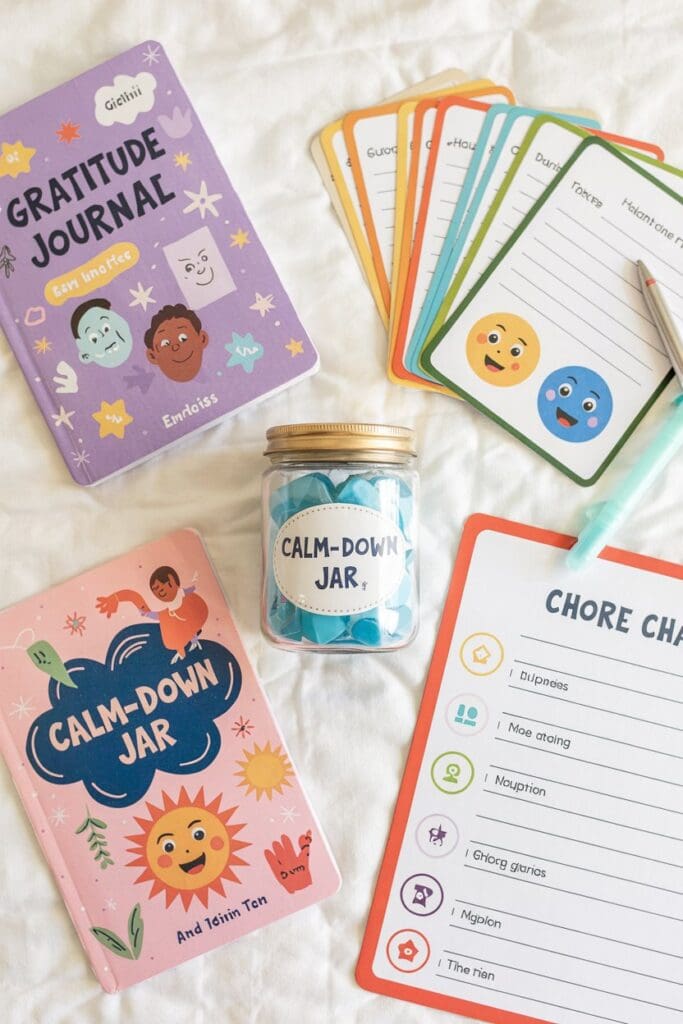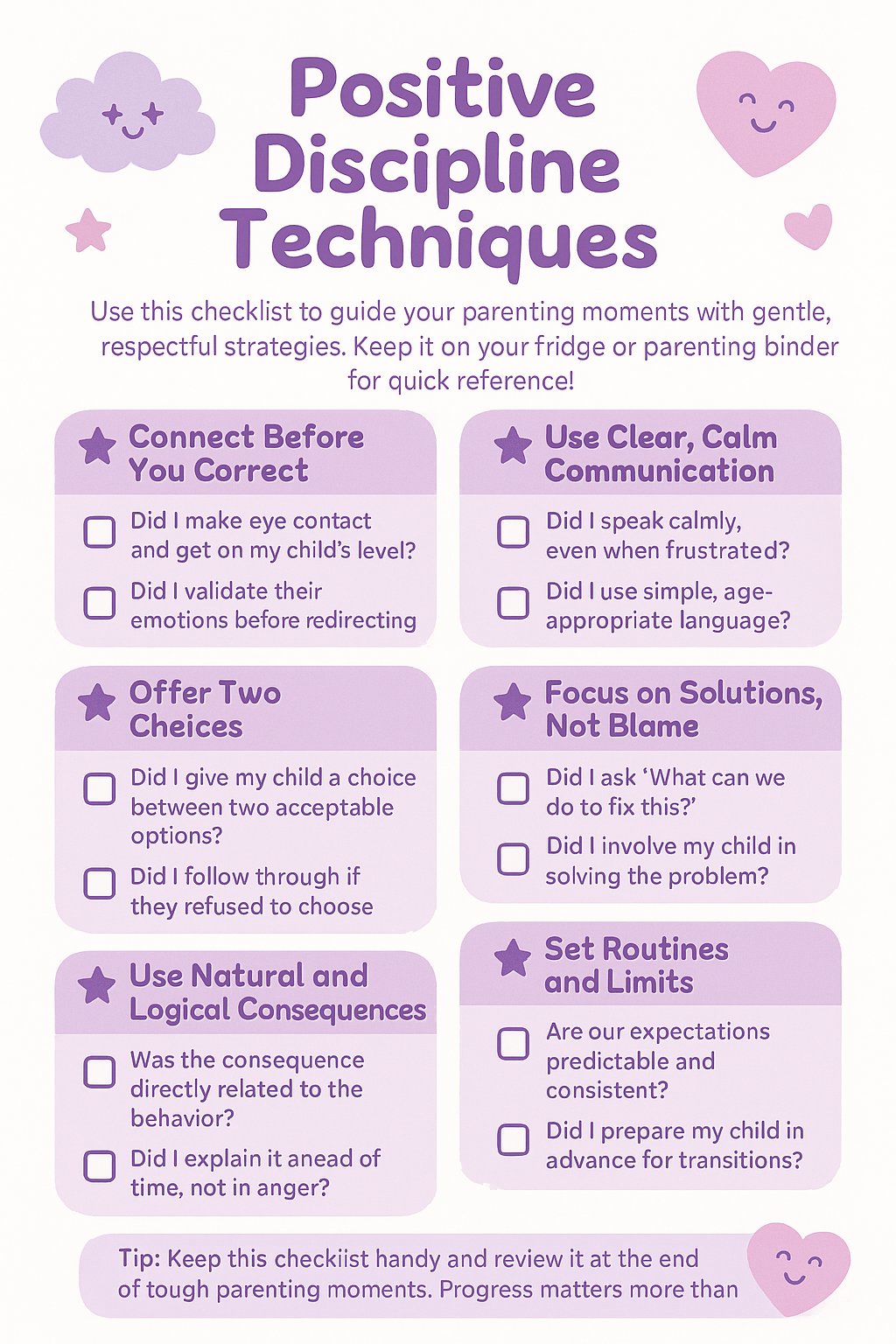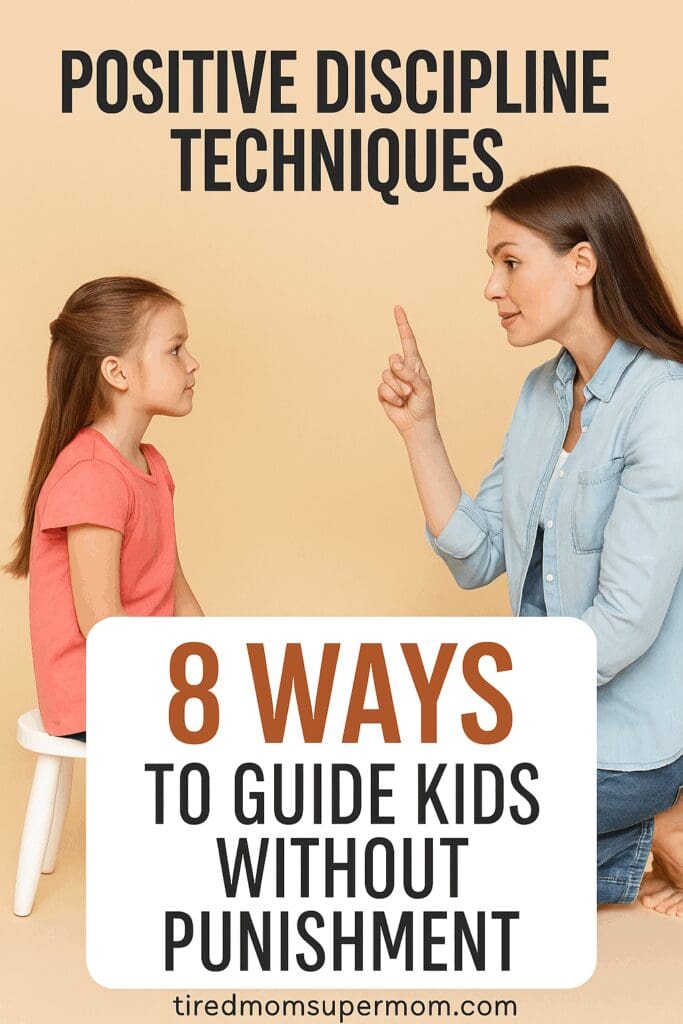Ways To Discipline Kids (Without Punishment)
Parenting is one of the most rewarding journeys, but it doesn’t come with a manual. Many parents struggle to find the right balance between being too strict and too lenient. Fortunately, positive discipline techniques offer a compassionate, research-backed alternative to traditional punishment.
In this post, we’ll explore 8 effective positive discipline techniques you can use with your children, backed by real experience and practical tips. These approaches foster respect, empathy, and long-term behavior change without shame, fear, or punishment.
Heads up: This post may include affiliate links. As an Amazon Associate, I earn from qualifying purchases—at no extra cost to you. Full privacy policy and disclosure here.

What Are Positive Discipline Techniques?
Positive discipline techniques are parenting strategies that guide children toward appropriate behavior through understanding, empathy, and firm boundaries. These methods promote self-regulation, teach valuable life skills, and encourage mutual respect.
Unlike punishment, which often focuses on making kids feel bad for their behavior, positive discipline is rooted in connection and learning. It equips children with tools to make better choices in the future.
1. Focus on Connection Before Correction
Children are more likely to cooperate when they feel seen and understood. Positive discipline techniques emphasize building strong emotional connections with your child. This means pausing before reacting, listening to their feelings, and validating their emotions.
Instead of immediately saying, “Stop yelling!”, try: “I hear you’re really upset. Can you tell me what’s going on?”
“Connection is the foundation of cooperation. A child who feels understood is far more likely to listen.”
Tool to try: Emotion regulation cards to help your child name and express their emotions in a healthy way.
Related Read: How to Respond to a Toddler Who Hits
2. Use Logical Consequences, Not Punishment
One of the most powerful positive discipline techniques is using natural or logical consequences instead of arbitrary punishments. For example, if your child refuses to wear their coat, the logical consequence might be feeling cold (as long as it’s safe).
Logical consequences help kids connect their actions with outcomes in a meaningful way.
Affiliate Suggestion: Chore chart magnets can help children visualize cause and effect when it comes to responsibilities.
3. Model the Behavior You Want to See
Children learn by example. If you want your child to speak kindly, be patient, and manage frustration, it starts with you.
Narrate your thought process when problem-solving, and admit when you’ve made a mistake. This humanizes you and models accountability.
Example: “I got frustrated and raised my voice. I’m sorry. I’m going to take a few deep breaths and try again.”
Helpful Tool: Positive Parenting Solutions Course – a fantastic resource for learning how to stay calm and effective.
You can also find additional parenting tools and principles on PositiveDiscipline.com, which offers a comprehensive overview of positive discipline principles used in classrooms and homes worldwide.
4. Offer Choices to Empower Your Child
Giving children age-appropriate choices fosters independence and reduces power struggles. It’s one of the easiest and most effective positive discipline techniques.
Examples:
- “Would you like to brush your teeth before or after putting on pajamas?”
- “Do you want to use the red or blue plate today?”
This strategy helps children feel respected and in control, making them more likely to cooperate.
Tip: Keep the options simple. Too many choices can overwhelm young kids.
Recommended: Toddler choice cards to make routine decisions easier.

5. Validate Feelings, Then Set Limits
Validating your child’s feelings doesn’t mean condoning bad behavior. It means acknowledging their emotions before guiding them to make better choices.
Try saying, “I see you’re angry that your toy broke. It’s okay to be upset. Let’s talk about how we can fix it.”
This approach helps kids feel heard and teaches emotional regulation skills.
Check out: Helping Kids Handle Negative Self-Talk
6. Use Encouragement, Not Praise
Encouragement focuses on effort and progress rather than outcomes. It builds intrinsic motivation, while excessive praise can lead to external approval-seeking.
Instead of saying, “Good job!” try: “You worked really hard on that drawing. What do you like about it?”
Affiliate Suggestion: Gratitude journals for kids to reinforce reflection and self-encouragement.
Related Post: What to Say Instead of “Good Job”
7. Use Redirection and Distraction (for Younger Kids)
Redirection is a classic positive discipline technique, especially effective for toddlers. If your child is climbing on furniture, gently guide them to a safer alternative: “The couch isn’t for climbing, but let’s try this climbing toy instead.”
This prevents power struggles while still addressing the behavior.
Product Tip: Indoor climbing set for toddlers for safe redirection.
8. Set Clear Expectations and Follow Through Calmly
Positive discipline requires consistency. Children feel secure when they know what to expect.
Explain your rules clearly and calmly: “We clean up our toys before dinner.”
If your child resists, stay firm but kind: “You can choose to clean up now or after five minutes. Either way, it needs to be done.”
Avoid threats or bribes. Gentle follow-through builds trust and respect.
Helpful Tool: Routine charts to help kids visualize expectations.
Also read: Best Kids Books for Sibling Rivalry
For globally recognized advice on non-punitive parenting strategies, UNICEF offers guidance on how to discipline in a healthy and smart way.
💜 Grab Your Free Checklist!
Want a gentle reminder of how to respond with patience and confidence during tough parenting moments?
Download your free Positive Discipline Checklist and stick it on your fridge or parenting binder for quick wins when emotions run high!
Because progress matters more than perfection — and you’ve got this, mama!

Frequently Asked Questions
What age are positive discipline techniques best for?
These techniques are effective for children of all ages, from toddlers to tweens. The key is adjusting your approach based on your child’s developmental stage.
Do positive discipline techniques work with strong-willed children?
Yes! In fact, positive discipline works particularly well with strong-willed kids because it offers structure and respect without power struggles.
What if my child doesn’t respond to these techniques?
Consistency is crucial. If you’re new to positive discipline, your child may test boundaries at first. Over time, these strategies build trust and change behavior.
Are time-outs part of positive discipline?
Not typically. Positive discipline focuses more on time-in (connecting during big emotions) or calm-down corners, where children learn to regulate emotions with support.
How can I learn more?
Consider a course like Positive Parenting Solutions or explore books from Jane Nelsen and Daniel Siegel.
Final Thoughts
Positive discipline techniques aren’t about being permissive or letting kids get away with misbehavior. They are about teaching, guiding, and empowering our children with empathy and structure.
Experts from the American Academy of Pediatrics emphasize that discipline should teach and guide rather than punish. You can read their guidelines on HealthyChildren.org.
You don’t have to be a perfect parent to raise respectful, resilient kids. You just need the right tools – and a whole lot of patience.
Ready to try one today? Start small. Pick just one technique from this list and try it consistently for a week.
Want a printable checklist of all 8 techniques? I can make that for you – just ask!

